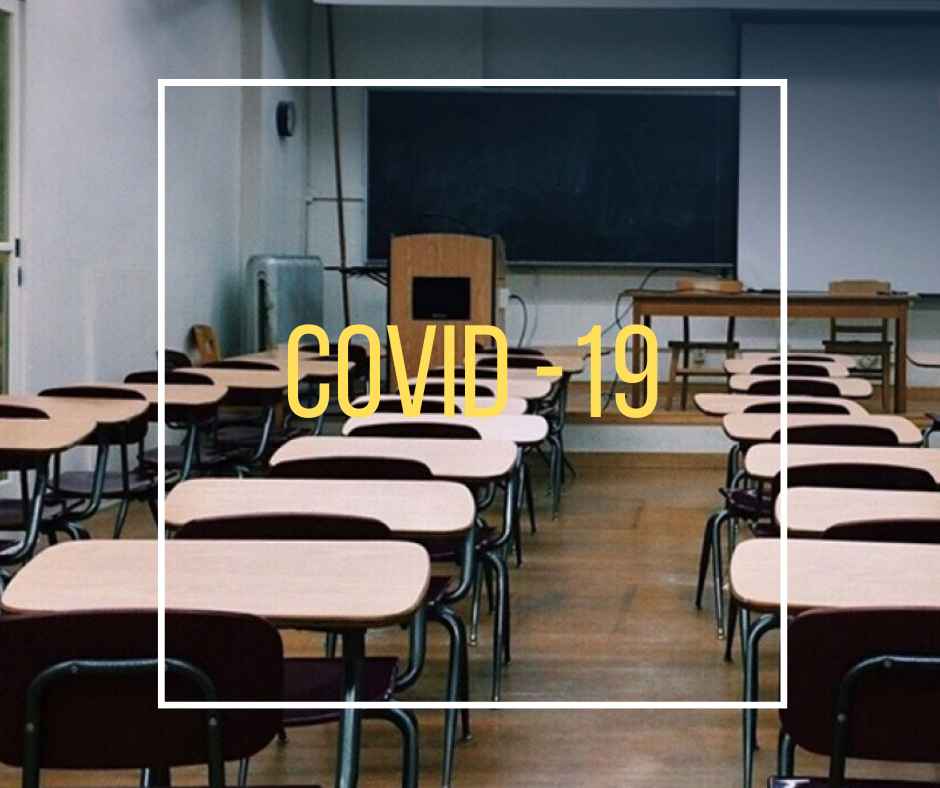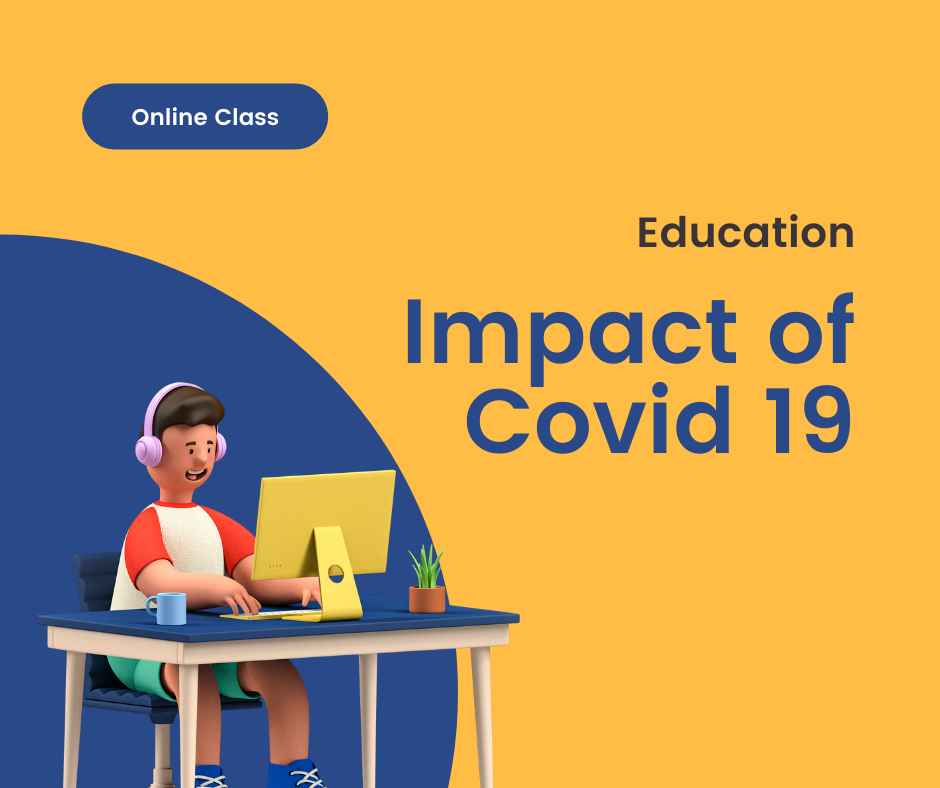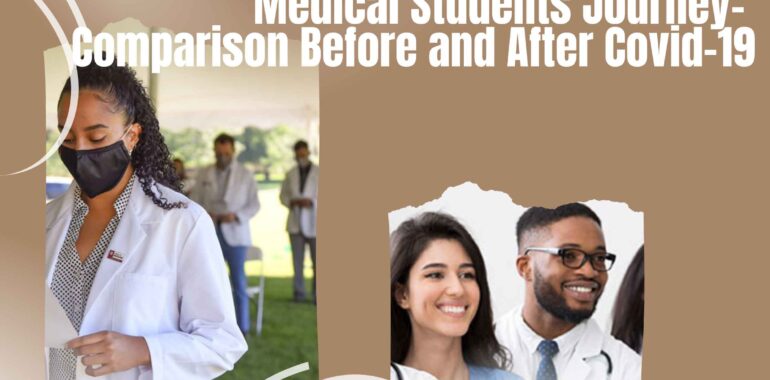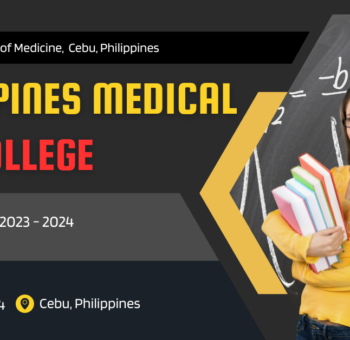This COVID-19 pandemic has brought us back-breaking times. People were forced to stay at home except for the frontline warriors who gave necessary care for the patients. The severe acute respiratory syndrome halted all the medical education and clerkships, putting the medical students at stake. However, with these unprecedented times, the education system was highly impacted and it led to newer ways towards education.
People appear to have been prepared for the peak of pandemic cases due to their initial knowledge of symptoms, transmission, and preventive behaviors related to COVID-19. They were more concerned about the immediate term, such as the risk of higher grocery prices or the stress of quarantine and isolation. The respondents’ knowledge and worries evolved throughout time and got long-term pandemic management issues.
How has the coronavirus pandemic impacted medical students?

In comparison to the first wave, the quarantine was not as stressful. The education issue was a source of anxiety for students. Medical professionals were more fearful of a pandemic than the other survey participants. In the non-medical sub-population, there has been a gradual shift away from popular media and toward more scientific sources of knowledge.
Most Indian students who returned home due to covid-19 are unable to return to a foreign land to continue their medical education. Philippines have officially announced to open its border for all tourists to enter the country from 1st week of April. This is a piece of glad news for Indian students studying MBBS in Philippines.
How was the medical student education in 2020?
Medical institutes have been working to upgrade the teaching system by eliminating or reducing lectures, using technology to replace/enhance anatomy and laboratories, implementing team-facilitated, active, and self-directed learning, and promoting individualized and interprofessional education. Assessment has been revolutionized by the introduction of professional activities and proficiency-based learning. Some institutions reduced their basic science curriculum to 12 or 18 months, allowing them to accelerate clinical medicinal training into this time span and revisit the basic sciences later in the course.
During the first 12 to 18 months of medical school, most medical schools require students to meet in physical settings for interactive problem-solving or small-group discussions; their physical presence in both inpatient and outpatient settings has been an unquestioned tenet of early clinical immersion experiences and the clerkship curriculum. Students may participate in advanced clinical rotations, sub internships before residency, or research projects during the last 18 months of medical school. COVID-19 had an adverse effect on students throughout their academic careers in life.
How COVID-19 Affected the Preclerkship Learning Environment?

Since the introduction of COVID-19, social separation has proven to be the most effective preventative method, pending the development of a vaccine, therapy, or both. Which prohibits students from learning in lecture halls, small-group rooms, or even in libraries. Many professors have already begun digitizing the classroom to provide personalized instruction for unhindered learning with the “anytime/anywhere” concept in the last few years. Students did, however, meet for small-group discussions, laboratory sessions, simulations, and technology sessions as well as clinical education with standardized patients and in real-world patient care settings.
Medical education faculty have quickly shifted the whole pre-clerkship curriculum to online formats in response to COVID-19, which includes coursework in the basic sciences, health systems sciences, and even behavioral sciences. Everything got converted to the online mode with students and teachers joining remotely.
Exams were also moved to an online format using Google forms and other technological aids. Updating content material may be a benefit of the online format, and virtual activities appear to be functional, but the effects of these modifications will need to be evaluated in the future. Isolation, increasing use of email, and difficulties establishing boundaries between work and home come from the move from the job or medical school setting to home, which can affect instructors, students, and support staff.
How does COVID-19 Affect the Clerkship Learning Environment?
As a learner who requires supervision, the student should ideally be a member of the team. The professional identities are formed in these contexts through instruction and role modeling as students learn to prioritize patients and aspire to do well in their field. Students may unwittingly spread the virus or get the disease if a highly contagious pandemic breaks out. Other factors that limit students’ roles in this clinical setting include a lack of COVID-19 testing, a diminished value of education as a result of the cancellation of surgical procedures and routine appointments, as well as the transition to telehealth formats, and a lack of adequate personal protective equipment (PPE).
Due to the paucity of PPE when COVID-19 first emerged, students were not involved in the care of patients with suspected or confirmed COVID-19. As infection rates rose, colleges began to remove students from clerkships, and the Association of American Medical Colleges issued guidelines on March 17, 2020, recommending that medical schools support stopping clinical rotations for medical students. Geographic variances, on the other hand, may lead to specialized selections based on unique circumstances.
Educators give students who are generally allocated to inpatient or outpatient rotations new experiences. Consolidating and moving clinical sessions online earlier to allow for later entry into the clinical environment; creating and using available virtual cases; modifying the academic calendar to exchange later experiences and defer clinical rotations. Involving students in the telehealth environment, including electives based on experiences students are pursuing to enable them to assist.
There is ambiguity about how long this scenario will last, and there is a growing realization that quarantines and social separation may be required again in the future after re-engagement in a “new normal” setting. The task is to provide authentic patient encounters for medical students as a vital component of medical education. If schools postpone clinical immersion experiences, there could be two full cohort classes of students in the clinical environment at the same time, negatively impacting teaching (which is already a problem in many geographic locations). The Liaison Committee on Medical Education has developed materials to assist medical schools with accreditation.
What does the future hold for medical students?
Medical education is a multigenerational environment. The idea that doctors would work while they were sick was once thought to be altruistic and professional, with the patient taking precedence over the doctor. COVID-19, on the other hand, represents a unique situation. Clinicians who come to work sick, as well as those who are asymptomatic and silently incubating the infection, may make it easier for others to contract the illness. As a result, the culture of professionalism and altruism must be reinterpreted to account for the consequences of potential actions, even if they are undertaken with good intentions. This is made more difficult by the lack of COVID-19 testing and the scarcity of personal protective equipment.
Additional unforeseen academic difficulties will need to be addressed, such as standardized examinations while testing centers are closed, the timing for current third-year students applying for residency, and the opportunity to complete subspecialty requirements prior to applying for residency. However, students from all levels of education have helped patients and communities in this crisis in a variety of ways. Students at medical schools across the country are volunteering in call centers, developing patient education materials, and assisting with grocery shopping, among other things while maintaining physical separation, safe travel, and supervision.
Recognizing the prospect of a healthcare worker shortage as a result of the COVID-19 pandemic, students may need to be involved in the workforce and immersed in the clinical setting. Medical schools will need to be nimble and flexible in their reaction as the situation evolves. Early graduation is being considered by several colleges, with fourth-year students being prepared to work as volunteers or residents in the clinical setting earlier. The latter may necessitate university flexibility in terms of degree conferral as well as updated licensure processes.
While the COVID-19 crisis is unfolding, it is critical that the academic educational community draws lessons from the situation and prioritizes a forward-thinking, scholarly approach as practical solutions are enacted. After that, there must be reflection and review. The phrase “make your work count twice” and the plan for the educational scholarship has never been more important for educators.
Conclusion
There are several examples of how learning from adversity has influenced research, science, and patient care. Students and instructors can assist in documenting and analyzing the effects of current changes so that new ideas and practices can be learned and applied in the future. Problems are an opportunity to help progress education in a time of active curricular innovation and transition. This pandemic has both positive and negative effects on the students. However, each difficulty gives birth to newer opportunities.



